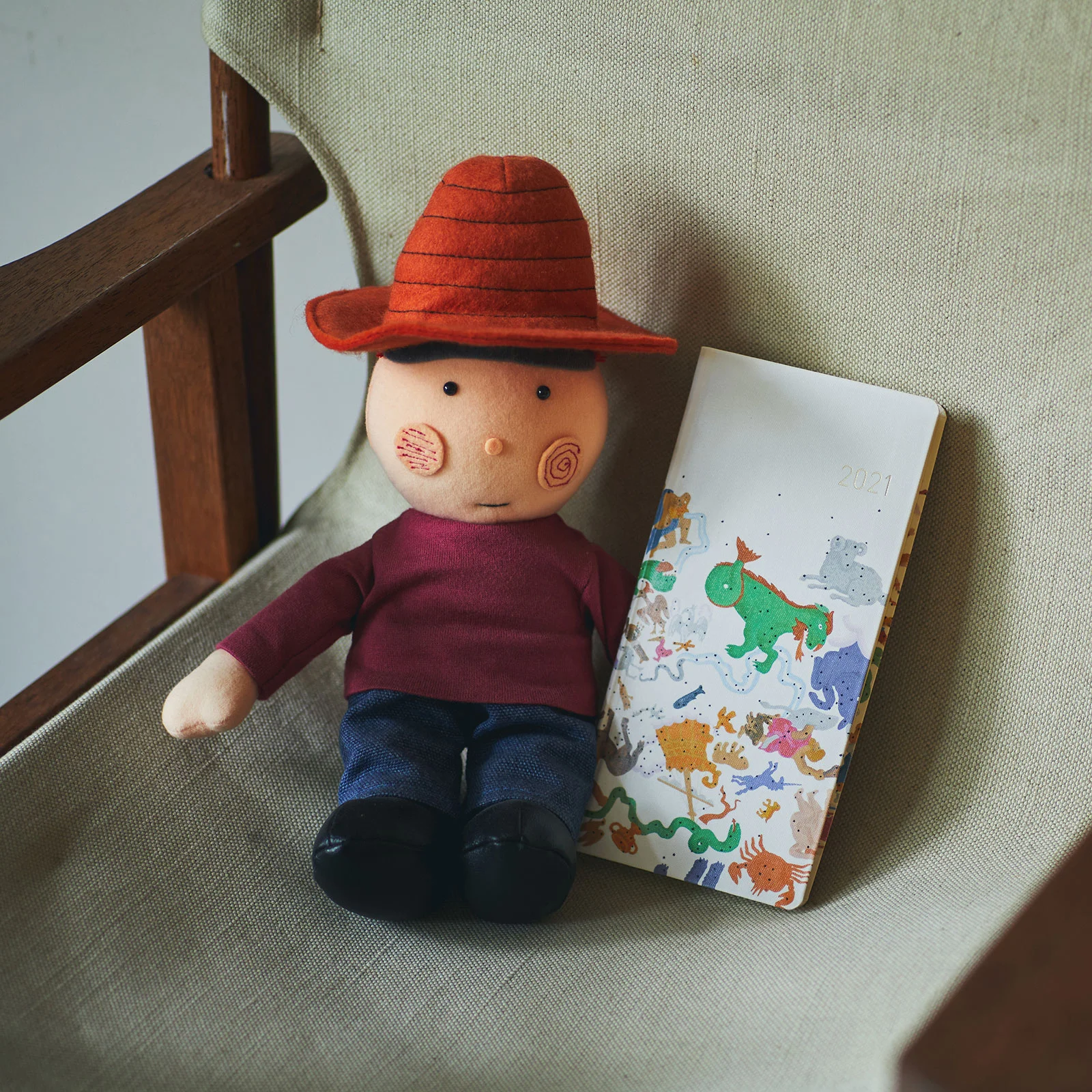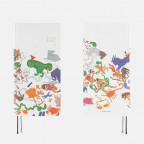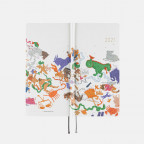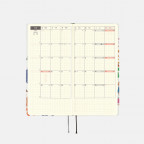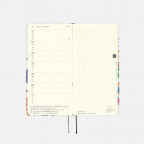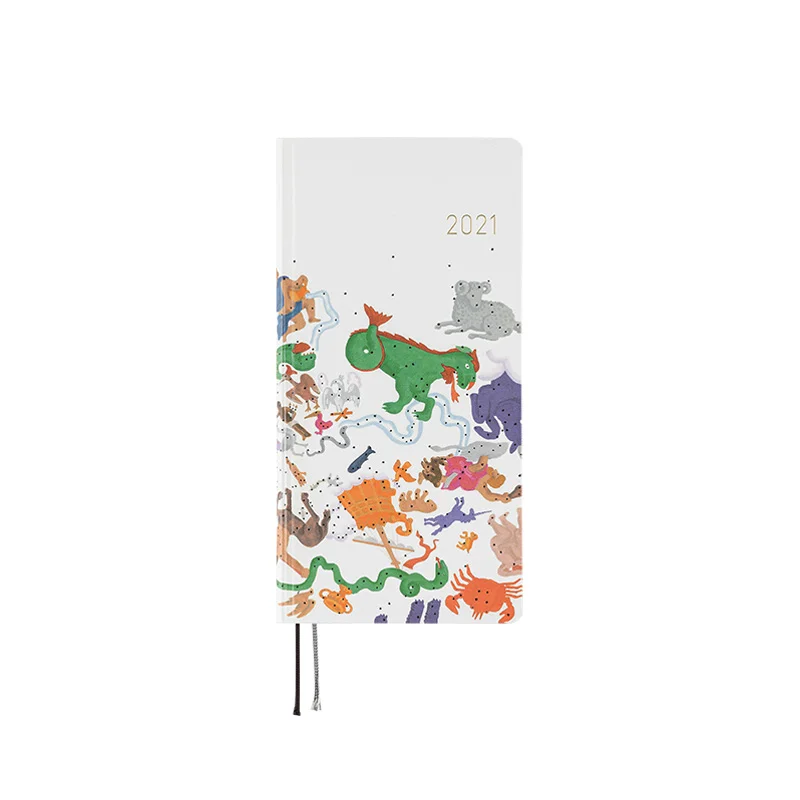Makoto WadaEmbrace the ConstellationsWeeks Hardcover Book (Japanese)
This Weeks book has a gentle charm to it, thanks to the illustration by famous Japanese graphic designer and illustrator Makoto Wada.
The title of the piece is Embrace the Constellations. Wada illustrated the covers of literary magazine Shukan Bunshun for over 40 years, starting in 1977. This piece was featured on the cover of the November 7, 2002 edition.
Wada created these constellation illustrations based on a 400-year-old star chart. The map's order is flipped horizontally from modern versions, but Wada had an explanation for this: "This is apparently the view from the eyes of God, who sits even higher than the stars and watches them below. It's fascinating seeing the grand scale from which folks from a long time ago thought about these things.”
This piece is printed on the Weeks book’s slightly textured, canvas-like cover material. Between the wide array of colors and the warm feel of the brush, this book is sure to raise the spirits of its user.
The year 2021 is foil-pressed in matte gold and has an elegant yet casual shine to it.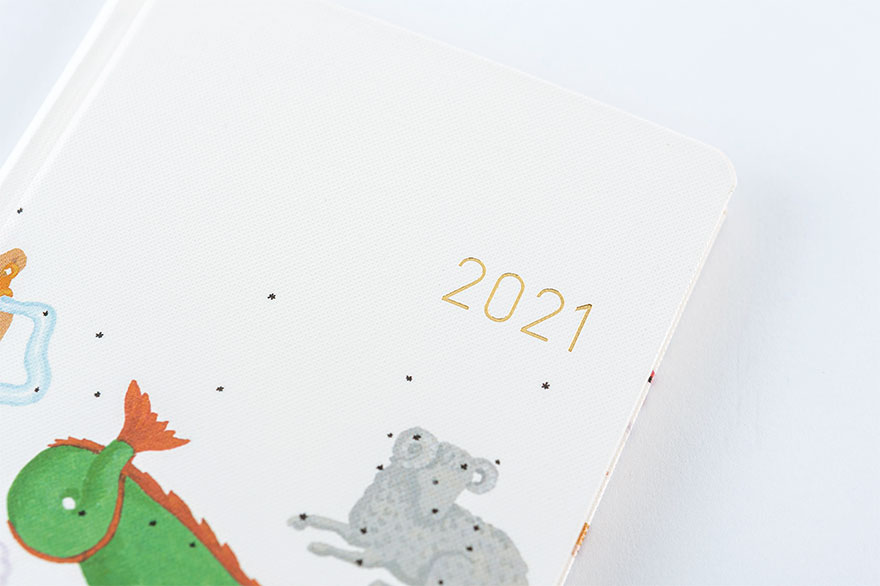
The corner of the back cover includes Makoto Wada’s name and a Hobonichi logo.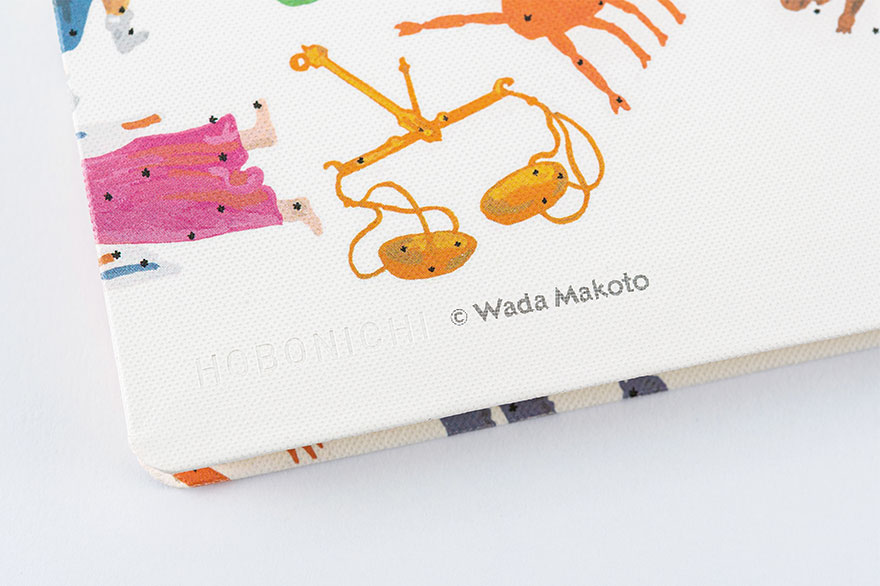
When you’ve got Wada’s cute yet beautiful constellations tucked in your pocket or bag, your techo will bring you many lovely days.
When you order this Hobonichi Techo Weeks, you’ll receive a clear, adhesive corner pocket you can stick anywhere you like.
If you’d like storage space or a way to change up the look of your Weeks book, you can customize your book by pairing it with a Weeks cover.
<See Weeks cover lineup>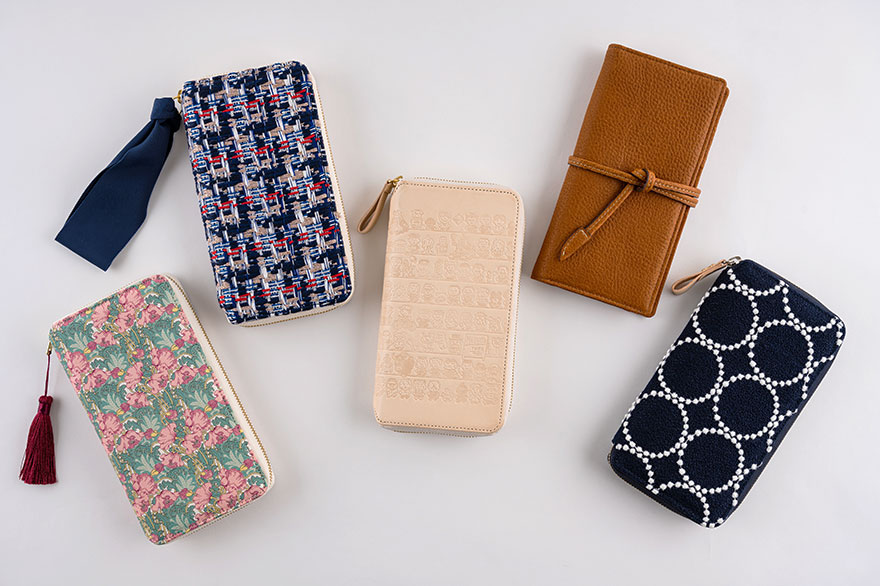
About Makoto Wada
Graphic designer and illustrator, Wada was born in 1936. He joined Light Publicity in 1959 and began freelancing in 1968. Wada took on the cover design for Shukan Bunshun in 1977. He directed his first movie, Mahjong Horoki, in 1984. Wada published over 200 books and won a number of awards, including the 1989 Blue Ribbon Award, the 1994 Hiroshi Kikuchi Award, the 1997 Mainichi Design Award, and the 15th Annual Japan Manga Association Special Award.
Makoto Wada Official Site
Makoto Wada Articles on Hobonichi (Japanese only)
Staff List
- Photographer
- Styled Images: Shinnosuke Yoshimori / Product Detail: Hiroyuki Oe
- Stylist
- Reiko Ogino
![]()
- Makoto WadaEmbrace the ConstellationsWeeks Hardcover Book (Japanese)
- 2,640
Specifications
- Overview
Size W: 94 x H: 188 x T: 10 mm / W: 3.7" x H: 7.4" x T: 0.4"
*Specifications may vary slightlyWeight Approx. 137 g Main material Synthentic canvas, paper - Weeks Book (Japanese / April Start)
Language Japanese Pages 240 pages Binding Stitch-binding Paper Type Thin, light Tomoe River paper resistant to bleeding and designed for planners. Graph Paper Size 3.55 mm Yearly Calendar 2020, 2021, 2022 Yearly Index Apr. 2021 - Mar. 2022 (2 pages) Monthly Calendar Mar. 2021 - Apr. 2022 (28 pages) Daily Quotes One per week (Japanese) Weekly Calendar Mar. 1, 2021 - Apr. 3, 2022 (114 pages)
*All weekly pages include quotes.Graph Paper 75 pages Informational Pages Shorthand Note-Taking / Graph Paper / Using Common Items to Measure Size / My 100 / Solar Terms / Weather Terms for your Techo / Basic Posture Techniques / Emergency Preparedness / Age Table / Conversion Chart / Getting the most of Hobonichi / Contact List / Personal Notes Listed Information Week of the year / Rokuyo (traditional Japanese calendar) / Solar terms / Japanese holidays / Moon phase (weekly pages include every phase, monthly calendars only include full and new moon)
*The 2021 Weeks book (April Start) is produced based on information as of September 2020, and therefore does not reflect the amendment in dates of the following national holidays: Marine day, Mountain day, and Sports day. We apologize for the inconvenience caused and ask for your kind understanding.
Please Read Before You Buy
In order to provide you with the most satisfaction for your product, we've compiled a list of warnings, potential issues, and tips to keep in mind for this particular product. Please be sure to read this information carefully before placing your order.
- Test fountain pens before regular use
The Hobonichi Techo's Tomoe River paper is designed to prevent bleed-through, but some fountain pens and water-based ink pens are not compatible with this paper. When switching to a new pen, we recommend testing the pen somewhere in the book, such as the back memo pages, to see if the ink bleeds through or takes an especially long time to dry.
- Cover corners are slightly bumpy and shiny
The corners of the cover contain light traces of press marks, shines, and lumps. This is an unavoidable part of the manufacturing process.
- Imprinted year numbers may peel
The numbers of the year are stamped onto the cover in metallic or other colored leaf, so strong rubbing or everyday use may cause the numbers to peel off.
- Avoid storing in hot and humid places
Please avoid storing your product in hot, humid places or placing it atop other objects for long periods of time as this may result in lower quality and color stains.


